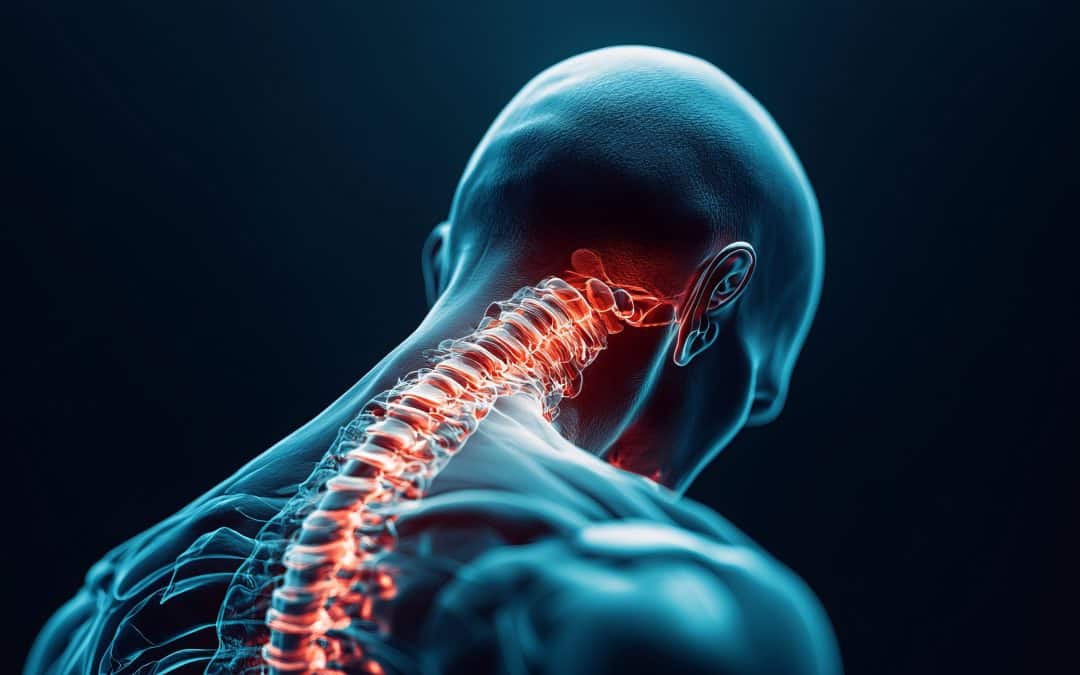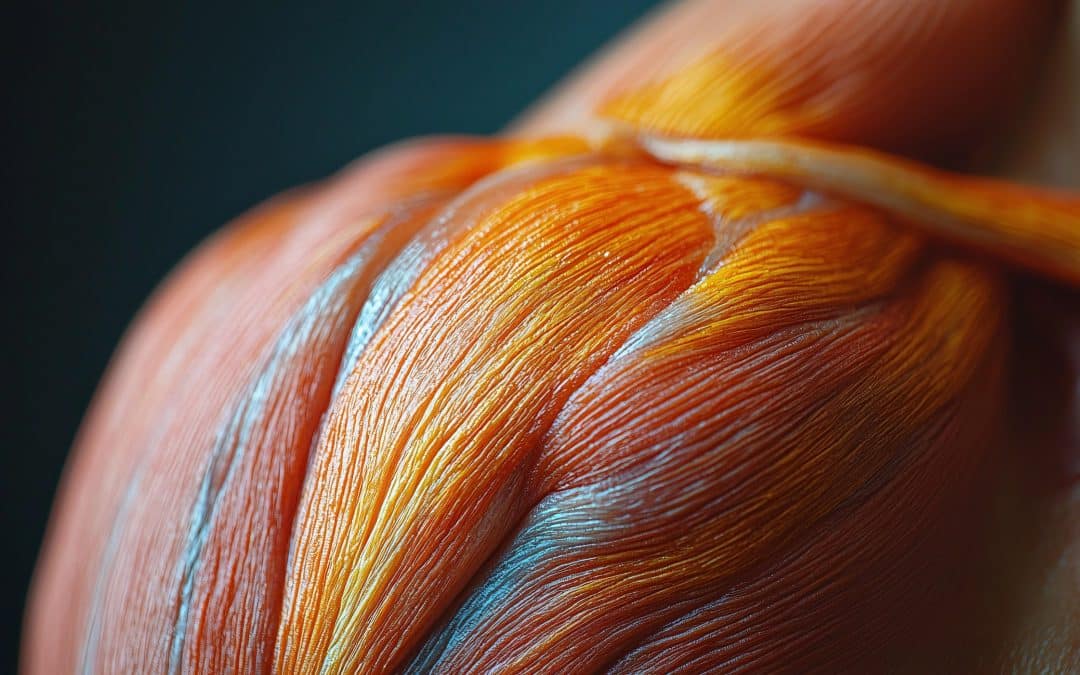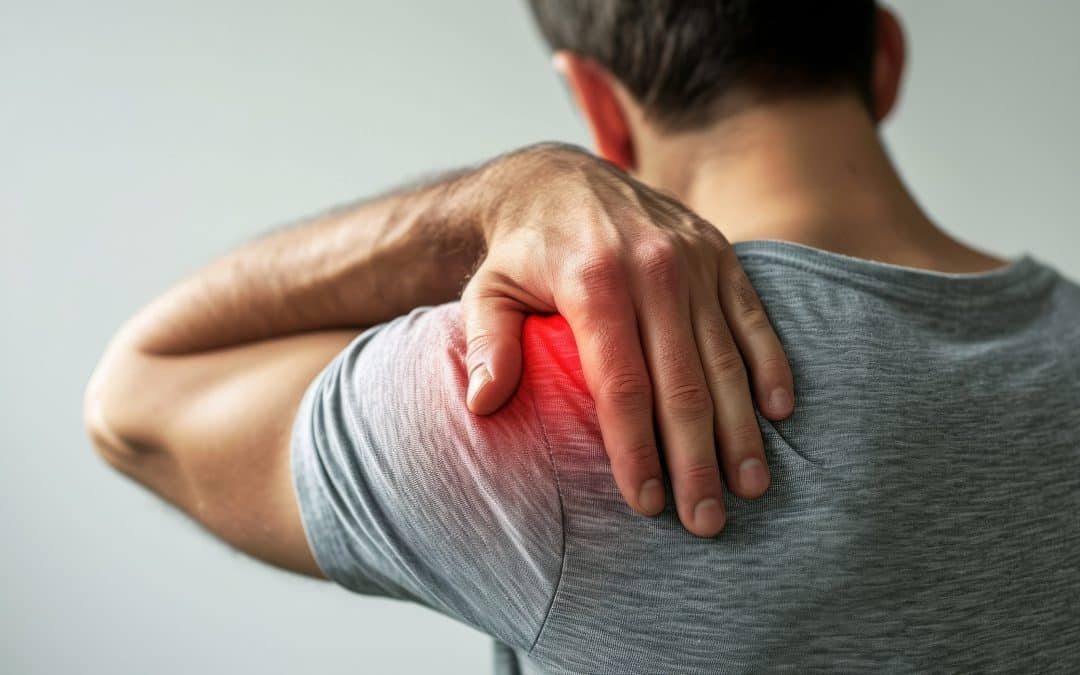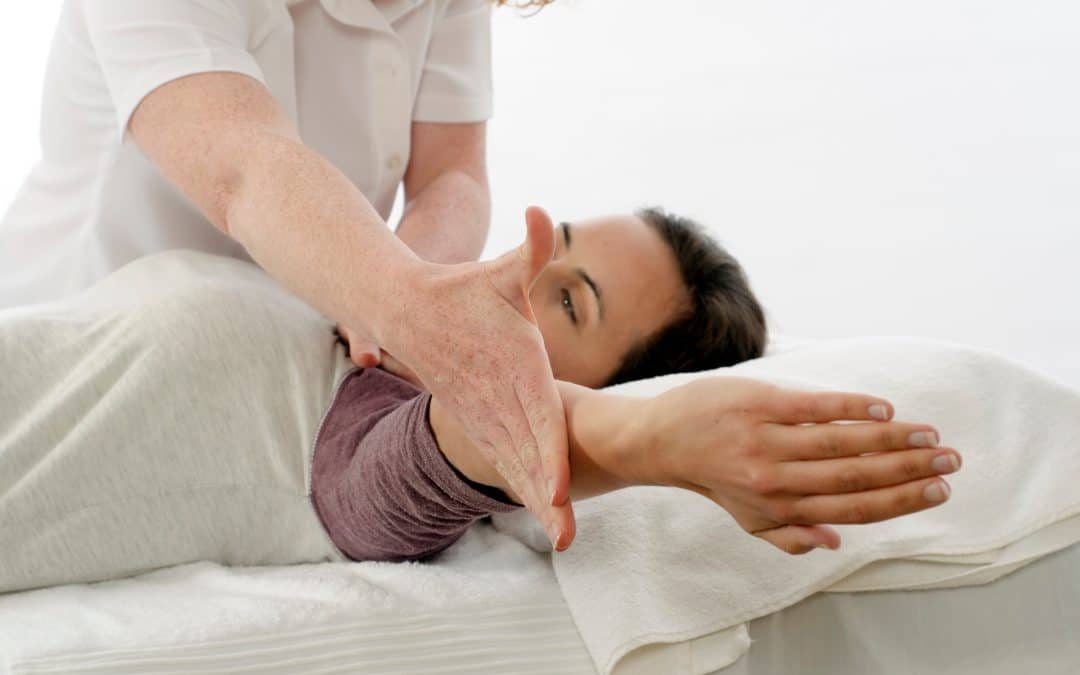
by Jason Nenzel | Mar 20, 2025 | news
Understanding Cervicogenic Headaches: Diagnosis and Treatment
Headaches are among the most common health complaints, but not all headaches are the same. While many people are familiar with migraines and tension-type headaches, fewer are aware of cervicogenic headaches—a type of secondary headache originating from the cervical spine. Fortunately, conservative treatments, including physical therapy, can offer significant relief and improve quality of life.
What Is a Cervicogenic Headache?
A cervicogenic headache is a type of headache that originates from dysfunction in the cervical spine (the neck). Unlike primary headache disorders such as migraine and tension-type headache, a cervicogenic headache is a secondary headache, meaning it results from an underlying issue rather than being the primary condition itself.
Pain from a cervicogenic headache is often unilateral (on one side) and may be aggravated by neck movements or sustained postures. Referred pain from the upper cervical spine can travel to the head, causing symptoms that mimic other headache types. Headache symptoms may also include dizziness, blurred vision, and sensitivity to light or sound.
Diagnosis of Cervicogenic Headache
The International Classification of Headache Disorders (ICHD-3) provides diagnostic criteria for cervicogenic headaches, helping distinguish them from migraine and tension-type headaches. A proper diagnosis of cervicogenic headache requires:
- Headache originating from the neck and spreading to the head
- Reduced range of motion in the cervical spine
- Reproduction of headache symptoms through specific neck movements or pressure applied to the upper cervical spine
- Absence of primary headache disorder symptoms such as aura or nausea
Because other serious conditions, such as a tumor or vascular issues, can also cause secondary headaches, a thorough assessment is essential. A physical therapist or healthcare provider may use a combination of clinical examination and imaging studies to diagnose cervicogenic headaches accurately.
How Physical Therapy Can Help
Physical therapy is a highly effective, evidence-based approach to treating cervicogenic headaches. Since this type of headache originates in the cervical spine, addressing neck dysfunction can significantly reduce symptoms and prevent recurrence. Here are some key physical therapy interventions:
1. Manual Therapy
Hands-on techniques such as joint mobilization and soft tissue release help improve mobility in the upper cervical spine, reducing stiffness and pain that contribute to headache symptoms.
2. Postural Correction
Forward head posture is a common contributor to cervicogenic headaches. A physical therapist can assess posture and provide corrective exercises to restore proper cervical alignment, reducing strain on the neck.
3. Strengthening Exercises
Strengthening the deep neck flexors and upper back muscles improves overall neck stability, reducing excessive load on the cervical spine. This helps prevent headache recurrence and improves functional movement.
4. Range of Motion Exercises
Limited neck mobility is a hallmark of cervicogenic headaches. Targeted range of motion exercises help restore flexibility and reduce stiffness, allowing for pain-free movement.
5. Ergonomic and Lifestyle Modifications
Many daily activities, such as prolonged sitting and poor workstation setup, contribute to neck pain and headaches. A physical therapist can provide guidance on ergonomic improvements, sleep positioning, and activity modifications to reduce strain on the cervical spine.
Other Conservative Treatments
In addition to physical therapy, other conservative approaches can help manage cervicogenic headaches effectively:
- Heat and Cold Therapy: Applying heat can relax tight muscles, while cold packs may help reduce inflammation and pain.
- Massage Therapy: Soft tissue mobilization can relieve tension in the neck and shoulders, decreasing headache frequency.
- Acupuncture: Some individuals find relief through acupuncture, which targets trigger points that contribute to referred pain.
- Nerve Block Injections: In certain cases, a healthcare provider may use a nerve block to confirm the diagnosis and provide temporary relief by numbing the affected cervical nerves.
The Importance of Early Diagnosis and Treatment
Ignoring cervicogenic headaches can lead to chronic pain and decreased quality of life. Seeking early intervention from a physical therapist or healthcare provider ensures that the root cause is addressed, preventing long-term complications. Since cervicogenic headaches are a type of secondary headache, identifying and treating the underlying cervical spine dysfunction is key to lasting relief.
When to Seek Medical Attention
While most headaches are benign, some symptoms warrant immediate medical evaluation. Seek urgent care if your headache:
- Is sudden and severe (“thunderclap” headache)
- Occurs after head trauma
- Is accompanied by neurological symptoms such as numbness, weakness, or slurred speech
- Is associated with fever, weight loss, or persistent nausea and vomiting
- Changes in pattern or intensity over time
Conclusion
Cervicogenic headaches can be frustrating and debilitating, but effective treatment options exist. Physical therapy offers a safe and evidence-based approach to relieving symptoms, improving mobility, and preventing recurrence. By addressing posture, strength, and mobility, individuals with cervicogenic headaches can achieve long-term relief and return to daily activities with confidence.
If you suspect your headaches may be cervicogenic, consult with a physical therapist or healthcare professional for an accurate diagnosis and personalized treatment plan. With the right interventions, you can take control of your headache disorder and experience lasting improvement.
At South Island Physio, our expert practitioners specialize in treating various types of headaches, including tension headaches, migraines, and sinus headaches. We offer comprehensive assessments, manual therapy techniques, and customized exercise programs to address the root cause of your headaches. Our team of Registered Physical Therapists, Massage Therapists, Kinesiologists, and Chiropractors are dedicated to providing exceptional care you can trust. Don’t wait for your symptoms to worsen – contact South Island Physio today to schedule a consultation and start your journey towards a headache-free life. Let us help you restore your neck function, improve your posture, and reduce the frequency and intensity of your headaches. Your path to relief begins with a single call – reach out now and take charge of your health!

by Jason Nenzel | Feb 20, 2025 | news
Suffering From Depression and Anxiety? Physical Activity Can Help!
Anxiety is one of the most prevalent mental health conditions, affecting millions of people worldwide. According to the Anxiety and Depression Association of America, anxiety disorders impact nearly 40 million adults in the U.S. alone. While medication and talk therapy are commonly used to treat anxiety, alternative treatments for anxiety, including physical exercise, have gained significant attention. Research shows that regular physical activity may significantly reduce symptoms of anxiety and stress while improving overall mental and physical health.
Exercise and Depression and Anxiety Relief – The Science
Exercise and physical activity offer a wide range of mental health benefits. A systematic review and meta-analysis of multiple studies indicate that people with anxiety disorders who engage in physical activity experience a noticeable reduction in anxiety symptoms. Physical exercise may improve mood, cognitive function, and stress management by triggering various physiological changes in the body. Exercise activates the release of endorphins, often referred to as the brain’s “feel-good” chemicals, which help you manage anxiety and stress more effectively. Additionally, aerobic exercise influences the production of neurotransmitters like serotonin and dopamine, which play a crucial role in mental health. These biochemical changes can ease symptoms of depression and anxiety, making regular exercise a powerful tool for those dealing with anxiety and panic disorders.
Effects of Physical Activity on Mental Health
The effects of exercise on mental health disorders, including anxiety and depression, have been extensively studied. A systematic review and meta-analysis found that individuals who exercise regularly experience lower levels of anxiety compared to those who are physically inactive. The prevalence of anxiety tends to be higher in individuals with sedentary lifestyles, and reducing sitting time by engaging in physical activity may help alleviate symptoms.
The physical benefits of exercise, such as improved cardiovascular health and reduced inflammation, contribute to overall well-being, which in turn can have a positive impact on mental health. Regular physical activity helps regulate the body's stress response, reducing the burden of anxiety disorders and improving resilience against stress and anxiety.
How Much Exercise is Necessary?
The Department of Health and Human Services and the Centers for Disease Control and Prevention recommend at least 150 minutes of moderate aerobic activity or 75 minutes of vigorous exercise per week. Small amounts of physical activity, such as taking the stairs instead of the elevator or engaging in short walks throughout the day, can also provide benefits. Even less intense exercise, such as yoga or stretching, can help ease symptoms of depression or anxiety.
Forms of Physical Activity That Reduce Anxiety
Engaging in various forms of physical activity may help reduce anxiety symptoms. Some of the most effective types of exercise include:
1. Aerobic Exercise
Activities such as running, cycling, swimming, and brisk walking can significantly reduce symptoms of anxiety and depression.
2. Strength Training
Weightlifting and resistance exercises have been shown to have positive effects on mental health, reducing stress and boosting confidence.
3. Yoga and Tai Chi
These mind-body exercises combine physical movement with controlled breathing, helping to lower trait anxiety and improve emotional regulation.
4. Team Sports or Group Exercise Programs
Participating in formal exercise programs or recreational sports can provide social support, which is beneficial for managing anxiety.
5. Everyday Physical Activity
Simple activities like taking a walk after meals or encouraging children after school to engage in active play can contribute to better mental health outcomes.
Starting a New Exercise Routine
For those dealing with depression and anxiety, starting a new exercise program can feel overwhelming. Here are some tips for starting and maintaining an exercise routine:
- Set Realistic Goals: Start with small, manageable goals, such as a 10-minute walk daily, before gradually increasing intensity and duration.
- Choose Enjoyable Activities: Find physical activities that you enjoy, whether it’s dancing, hiking, or swimming.
- Exercise Regularly: Consistency is key; aim to engage in regular physical activity at least three to five times a week.
- Mix It Up: Incorporate different exercises to keep things interesting and target various muscle groups.
- Seek Support: Exercising with a friend or joining a class can provide motivation and accountability.
- Listen to Your Body: It’s important to recognize when to push yourself and when to rest, especially if you have a pre-existing health condition.
Exercise and Mental Health Professionals
While exercise offers many mental health benefits, it is not a substitute for professional care. If you experience severe anxiety and panic symptoms, it’s essential to consult a healthcare professional or mental health professional. A combination of therapy, medication, and regular physical activity may be the most effective approach for managing symptoms of depression or anxiety. The Mayo Clinic and other reputable health organizations recommend incorporating exercise into treatment plans under the guidance of a mental health professional.
The role of exercise in mental health treatment cannot be overstated. Regular physical activity can help reduce anxiety, improve mood, and enhance overall well-being. Every step counts, whether through structured aerobic activity, strength training, or simply making small lifestyle changes like taking the stairs instead of the elevator. Exercise and physical activity may not only ease symptoms of depression and anxiety but also provide long-term resilience against stress.
If you’re dealing with anxiety, incorporating an exercise routine into your daily life may be one of the most effective steps to take toward better mental health. Let the expert practitioners at South Island Physiotherapy in Victoria, BC, help you develop an exercise plan to support your mental health. Contact us today to schedule a consultation.

by Colin Beattie | Feb 13, 2025 | news
Cervical Radiculopathy – “Pinched Nerve” Management in Primary Care
Cervical radiculopathy, often called a “pinched nerve in the neck,” happens when a nerve root in the cervical spine (neck) gets compressed or irritated. This can cause pain, tingling, numbness, and muscle weakness that spreads from the neck to the shoulders, arms, and hands. While severe cases may require surgical treatment, most people can find relief with conservative (nonsurgical) treatment options.
This article explores the common causes, symptoms, diagnosis, and conservative treatment options for cervical radiculopathy.
What Causes Cervical Radiculopathy?
Cervical radiculopathy is often caused by conditions that put pressure on the nerve root.
Common causes include:
- Cervical disc disease: Age or trauma-related changes in the discs between the cervical vertebrae can lead to bulging or herniated discs, which press on the spinal nerve root.
- Cervical spondylosis: Age-related degenerative cervical changes can lead to bone spurs that put pressure on the nerves.
- Injury or trauma: Accidents or sudden movements can damage the cervical spine and cause nerve compression.
- Spinal stenosis: Narrowing of the spinal canal can put pressure on the nerve roots.
Symptoms of Cervical Radiculopathy
Patients with cervical radiculopathy may experience:
- Neck and upper extremity pain: Pain that radiates from the neck to the shoulders, arms, and hands.
- Tingling or numbness: Affected nerve roots may cause a “pins and needles” sensation in the arms or hands.
- Muscle weakness: Some people notice difficulty gripping objects or lifting their arms.
- Radicular symptoms: Symptoms that follow the path of the affected nerve, including pain, burning, or electric shock sensations.
- Neurological symptoms: Loss of reflexes and coordination in the arms and hands.
It’s important to distinguish between cervical radiculopathy and cervical myelopathy. While radiculopathy affects the nerve roots, cervical myelopathy involves spinal cord compression, which can lead to more severe symptoms, including balance and coordination problems.
Diagnosing Cervical Radiculopathy
A Physiotherapist, Chiropractor or Medical Doctor will diagnose cervical radiculopathy based on a patient’s symptoms, medical history, and physical examination. Some tests that may be used to confirm a cervical radiculopathy diagnosis include:
- Magnetic resonance imaging (MRI): This is the most effective imaging test for detecting nerve compression, herniated discs, and other spinal issues.
- X-rays: Can show degenerative cervical changes, such as bone spurs or disc narrowing.
- Electromyography (EMG): Assesses nerve function and helps distinguish between nerve and muscle problems.
Conservative Treatment Options
Most cases of cervical radiculopathy improve with nonsurgical treatment. A primary care doctor or physical therapist may develop a treatment plan that includes:
1. Physical Therapy
Physical therapy is one of the most effective conservative treatments for cervical radiculopathy. A physical therapist can teach exercises to relieve pain, improve mobility, and strengthen muscles that support the neck and upper back. Key techniques include:
- Deep cervical flexor exercises: Strengthening these muscles can help relieve symptoms and reduce pressure on the nerve.
- Cervical traction: A method that gently stretches the neck to relieve pressure on the nerve root.
- Postural correction: Improving posture can reduce strain on the cervical spine and help treat cervical radiculopathy.
2. Medications
Over-the-counter and prescription medications may help relieve pain and inflammation. Common options include:
- Nonsteroidal anti-inflammatory drugs (NSAIDs): Such as ibuprofen or naproxen, to reduce pain and inflammation.
- Muscle relaxants: Can help with muscle tightness and spasms.
- Oral corticosteroids: Sometimes, a doctor may prescribe steroids to reduce swelling around the affected nerve.
3. Use of a Soft Cervical Collar
A soft cervical collar can temporarily support the neck and reduce movement that may worsen symptoms. However, it is generally recommended only for short-term use, as prolonged use can weaken neck muscles.
4. Cervical Pillow and Nighttime Support
A cervical pillow can help maintain proper neck alignment while sleeping, reducing pressure on the affected nerve.
5. Lifestyle Modifications
- Ergonomic adjustments: Using a supportive chair, keeping screens at eye level, and maintaining good posture can help prevent worsening symptoms.
- Activity modification: Avoiding repetitive neck movements or heavy lifting can reduce pressure on the cervical nerve.
6. Epidural Steroid Injections
For severe pain that does not improve with other treatments, a doctor may recommend an epidural steroid injection to reduce inflammation and relieve pain.
When Surgery May Be Recommended
While most patients with cervical radiculopathy get better with conservative treatment, some cases may require surgical treatment if symptoms persist for several months or worsen. Surgical options include:
- Anterior cervical decompression and fusion (ACDF): A procedure where the affected disc is removed and the vertebrae are fused to stabilize the spine.
- Artificial disc replacement: Instead of fusing the spine, an artificial disc is inserted to preserve motion.
A doctor may recommend surgery if a patient has severe nerve root pain, progressive muscle weakness, or signs of spinal cord compression.
Cervical radiculopathy is a common cause of neck and arm pain when a nerve in the neck is compressed. Fortunately, most cases improve with conservative treatment, including physical therapy, medications, cervical traction, and lifestyle adjustments. While surgical treatment may be necessary for some patients, nonsurgical options can effectively reduce pain, improve function, and help individuals return to daily activities.
If you are experiencing symptoms like neck and arm pain, muscle weakness, or numbness, our expert team at South Island Physiotherapy in Victoria, BC, can help! Contact us for a proper diagnosis and treatment plan. With the right approach, most patients can successfully relieve symptoms and avoid surgery.

by Colin Beattie | Jan 28, 2025 | news
Maximizing Injury Recovery Through Strength Training: An Evidence-Based Guide
Muscle recovery and generally recovering from an injury overall requires a well-rounded approach that includes rest, rehabilitation, and most importantly, strength training. Incorporating targeted exercises into your recovery process enhances muscle repair, reduces muscle soreness, and helps you regain functional strength. This guide will explore how to maximize recovery following an injury by focusing on evidence-based strength training principles.
The Role of Strength Training in Injury Recovery
When recovering from an injury, it’s essential to address both muscle damage and loss of strength. Resistance exercises promote muscle repair and stimulate the growth of stronger muscles. By engaging different muscle groups, you can rebuild stability and reduce the risk of future injuries.
How Strength Training Aids Recovery
– Muscle Repair: Exercise causes micro-tears in muscle fibres, which trigger the body’s healing process. Proper strength training accelerates muscle repair by enhancing blood flow and nutrient delivery.
– Muscle Growth and Stability: Resistance exercise builds muscle mass around the injured area, improving overall stability and reducing compensatory strain on other muscles.
– Improved Blood Flow: Strength training increases circulation, which delivers oxygen and nutrients necessary for recovery.
Key Principles of Strength Training for Recovery
- Gradual Progression
It’s important to pay attention to your body’s signals and progress slowly. Start with light resistance exercises using body weight or resistance bands. Increase the weight or intensity as your muscles feel stronger and more resilient.
– Listen to Your Body: Pain during strength training may indicate further injury. Adjust your workout routine to avoid exacerbating the issue.
– Number of Repetitions: Begin with higher repetitions of low-resistance exercises, then gradually decrease repetitions as you increase the load.
- Targeting Different Muscle Groups
Injury often leads to muscle imbalances. A comprehensive fitness program addresses these imbalances by working on all relevant muscle groups.
– Alternate Muscle Groups: Rotate between different muscle groups to avoid overloading any one area. This approach gives your muscles time to recover and supports overall muscle repair.
– Larger Muscle Groups First: Focus on strengthening major muscle groups that stabilize and support the injury site.
Active vs. Passive Recovery in Injury Rehabilitation
Active recovery involves light physical activity to promote healing, while passive recovery refers to complete rest. For most injuries, a combination of both methods yields the best results.
Benefits of Active Recovery
– Increased Blood Flow: Active recovery days, such as walking or low-intensity cycling, enhance circulation without adding stress to the injury.
– Muscle Flexibility: Active stretching reduces stiffness and helps muscles recover efficiently.
The Role of Rest
While complete rest (passive recovery) is essential in the early stages of injury, prolonged inactivity can lead to muscle atrophy. Incorporating strength training as soon as it’s safe is critical to maintaining muscle mass and preventing further weakness.
Best Practices for Strength Training During Recovery
- Resistance Training
– **Body Weight Exercises**: Begin with body weight movements that don’t strain the injury. Progress to resistance bands and light weights as tolerated.
– **Resistance Bands**: These provide controlled, gradual resistance that is ideal for rebuilding strength.
- Progressive Overload
Gradually increase the resistance to stimulate muscle growth. Use small increments to prevent further muscle damage and allow for adequate recovery time.
– Exercise Guidelines: Follow physical activity guidelines for Americans, which recommend strength training two to three days per week.
- Rest Days
Injury recovery demands proper scheduling of rest days. Avoid working out the same muscle groups on consecutive days to give your muscles time to recover.
Active Recovery Workouts for Injury Rehabilitation
Incorporating active recovery activities can reduce delayed onset muscle soreness (DOMS) and prevent stiffness:
– Swimming: Provides low-impact resistance.
– Yoga: Enhances flexibility and reduces muscle tension.
– Walking: Maintains blood flow without straining joints.
Reducing Muscle Soreness and Fatigue
Strength training promotes post-workout recovery by improving muscle resilience. Here’s how to optimize your recovery:
– Nutrition: Protein-rich meals support muscle repair, while carbohydrates replenish energy.
– Hydration: Staying hydrated facilitates nutrient transport to recovering muscles.
– Sleep: Aim for seven to nine hours of sleep to give your body time to rebuild muscle fibres.
Monitoring Your Recovery Progress
Tracking your progress helps ensure you’re able to recover fully before returning to intense workouts.
– Recovery Periods: Balance challenging workouts with adequate recovery periods.
– Listen to Your Body: If soreness or pain persists, consult a medical center or physiotherapist.
Conclusion
Strength training is a powerful recovery method that supports muscle repair, reduces injury risk, and restores functional movement. An effective recovery plan balances active recovery, proper rest, and progressive resistance exercises. Whether using resistance bands or weights, focus on gradual progression and pay attention to your body’s signals. Incorporate strength training into your fitness routine to help your muscles recover and return to peak performance.
Thank you for reading our guide on injury recovery through strength training. At South Island Physiotherapy in Victoria, BC, we’re here to help you regain strength and mobility with personalized rehab plans. Ready to enhance your recovery? Contact our expert team today to schedule a consultation and start your journey back to peak performance.

by Colin Beattie | Jan 24, 2025 | news
Alternatives to Shoulder Replacement Surgery: Exploring Your Options
Shoulder replacement surgery is a highly effective solution for severe shoulder joint issues, but it’s not the only path to recovery. For those seeking alternatives to shoulder replacement surgery, there are several non-invasive and minimally invasive treatment options available. These alternatives focus on managing chronic shoulder pain, improving range of motion, and reducing inflammation and pain. Here’s an evidence-based look at the options:
Understanding Shoulder Replacement and Why Alternatives Are Sought
Shoulder replacement, also known as shoulder arthroplasty, involves replacing damaged parts of the shoulder joint with artificial components. This is often recommended for conditions such as severe osteoarthritis of the shoulder, rheumatoid arthritis, or irreparable damage to the rotator cuff. However, shoulder replacement options, including reverse total shoulder replacement or partial shoulder replacement, are major surgical procedures with significant recovery periods.
For some, surgery may not be the best option due to age, health conditions, or personal preference. In these cases, exploring alternatives to shoulder replacement can provide relief and improve shoulder function without the need for invasive surgery.
Non-Surgical Alternatives to Shoulder Replacement
Physical therapy is a cornerstone of conservative treatments for shoulder pain and injuries. A customized therapy program strengthens the muscles around the shoulder blade and joint, improving stability and range of motion.
- How It Helps: Strengthening the muscles attached to the shoulder blade supports the joint and reduces strain on damaged tissues.
- Best for: Chronic shoulder pain, shoulder osteoarthritis, and frozen shoulder.
2. Stem Cell Therapy for the Shoulder
Stem cell therapies, including adult stem cells harvested directly from the patient’s body, are a promising alternative treatment for shoulder joint issues.
- Mechanism: Stem cell injections aim to repair damaged cartilage and reduce inflammation, promoting natural healing in the shoulder joint.
- Evidence: While studies are ongoing, clinics like the Mayo Clinic and other medical centers offer resources on stem cell therapy as a potential treatment for shoulder osteoarthritis and injuries.
3. Platelet-Rich Plasma (PRP) Injections
PRP therapy involves using the patient’s own blood plasma, which is rich in growth factors, to stimulate healing in the shoulder joint.
- Benefits: PRP can reduce inflammation and pain while promoting tissue repair.
- Best for: Chronic shoulder pain, early stages of osteoarthritis, and rotator cuff injuries.
4. Alternative Therapies
- Hydrotherapy: Performing exercises in water reduces joint strain while maintaining mobility.
- Massage Therapy: Targets tight muscles around the shoulder blade to alleviate pain.
- Acupuncture: May reduce pain and inflammation in chronic conditions.
Lifestyle and Conservative Treatments
1. Pain Management
- Medications: Over-the-counter pain relievers and anti-inflammatory drugs can reduce inflammation and pain.
- Topical Treatments: Creams and gels with active ingredients like capsaicin or menthol offer localized relief.
2. Exercise and Stretching
Engaging in a regular fitness routine tailored to your condition can improve shoulder function.
- Range of Motion Exercises: Help maintain mobility in the shoulder joint.
- Strength Training: Focus on strengthening the muscles attached to the shoulder blade to enhance joint stability.
3. Lifestyle Adjustments
- Weight Management: Reduces strain on joints.
- Postural Improvements: Proper posture minimizes stress on the shoulder and elbow joints.
When to Consider Shoulder Replacement Surgery
While alternatives to shoulder replacement surgery can be effective, they may not work for everyone. If chronic joint pain significantly impacts your quality of life and conservative treatments fail, consulting a shoulder specialist is crucial. A specialist can help determine whether surgical treatments, like total joint replacement or reverse total shoulder replacement, are necessary.
Alternatives to shoulder replacement provide valuable options for managing pain and improving shoulder function without undergoing surgery. From physical therapy and stem cell injections to PRP therapy and conservative treatments, these methods can reduce inflammation and pain while preserving the joint.
If you’re suffering from shoulder osteoarthritis or chronic joint pain, explore these alternatives and consult a specialist to find the best treatment option for you….or stop by our physical therapy clinic in Victoria. With the right approach, it’s possible to avoid surgery while maintaining an active and pain-free lifestyle.

by Jason Nenzel | Dec 29, 2024 | news
How Kinesiology For Chronic Pain Helps People Feel Better
Chronic pain is a type of pain that lasts for a long time, often for months or even years. It’s different from acute pain, like when you accidentally stub your toe or cut your finger, which goes away quickly. Chronic pain can make it hard to do everyday activities like walking, working, or even enjoying time with friends and family. Kinesiology for chronic pain offers good news—movement and exercise, guided by an expert kinesiologist, can help!
Kinesiology is the study of how the body moves. Experts in this field use exercise and physical activity to help people recover from injuries, improve their health, and reduce pain. Let’s explore how kinesiology plays a big role in helping people with chronic pain feel better and get back to their normal lives.
Why Exercise is Key for Persistent Pain
Studies, including randomized controlled trials (a fancy way of saying carefully designed experiments), show that exercise can help people with chronic pain feel better. Exercise doesn’t just make your muscles stronger—it can also reduce pain, improve your mood, and help you do daily activities more easily. For example, aerobic exercise like walking, cycling, or swimming can help with low back pain, one of the most common types of chronic pain. These activities increase your heart rate and improve your overall health, including your cardiovascular system (your heart and blood vessels). People who stick to an exercise program often notice less pain and better movement.
How Kinesiology Designs Exercise Programs
Kinesiologists design exercise interventions (special plans for movement and workouts) based on the needs of each person. These programs might include:
- Aerobic Exercise: Activities like jogging, swimming, or brisk walking that improve heart health and endurance.
- Resistance Exercise: Strength training with weights, resistance bands, or even your own body weight to build stronger muscles.
- Endurance Exercise: Exercises that help you stay active longer without getting tired quickly.
- Manual Therapy: Hands-on techniques like massage or stretching to reduce pain and improve movement.
For example, older adults with chronic pain may need gentle exercises to improve their quality of life and keep them moving. In contrast, someone with lower limb pain might focus on strengthening their legs and improving balance.
What Does Science Say About Exercise and Pain?
There’s a lot of research showing that exercise works! A systematic review and meta-analysis (a big study that combines results from many smaller studies) found that exercise helps reduce pain and improve daily life for people with chronic pain. These studies show that exercise can:
- Reduce Pain Intensity: People feel less pain after doing the right kinds of exercise regularly.
- Improve Activities of Daily Living: Everyday tasks like cooking, cleaning, or climbing stairs become easier.
- Boost Mental Health: Physical activity can reduce stress and make people feel happier.
One randomized clinical trial showed that adults with chronic pain who followed a guided exercise protocol had a significant difference in their pain levels compared to those who didn’t exercise. The control group (the group that didn’t do the exercise) didn’t improve as much.
Matching the Right Exercise to the Person
Not all exercises work the same for everyone. The type, intensity, and frequency of exercise matter. For example:
- People with low back pain might benefit from low-impact movements like swimming or yoga.
- Those with chronic pain from cardiovascular disease might need carefully planned aerobic exercises.
- Resistance training can help adults build strength to support painful joints.
- Gentle exercises for older adults can help maintain mobility and independence.
Kinesiologists pay attention to these details to create safe and effective exercise plans.
Pain Management Beyond Exercise
While exercise is powerful, it’s often combined with other treatments, like physical therapy, manual therapy, and even counselling, to help manage pain. Together, these approaches create a recovery pathway that guides patients back to health.
For example, someone with chronic pain might see a physical therapist, follow an exercise program at home, and receive advice on how to move safely during daily activities. These combined therapies aim to reduce pain and gradually improve their life.
The Bigger Picture: Why Movement Matters
Whether it’s a structured exercise training program or simple movements like stretching or walking, staying active is key. Movement helps:
- Increase blood flow to painful areas, which can speed up healing.
- Strengthen muscles and joints, making the body more resilient.
- Improve mental health, reducing feelings of stress and anxiety that often come with chronic pain.
A Brighter Future Through Movement
Chronic pain doesn’t have to take over your life. With the help of kinesiology and well-designed exercise interventions, people can find their way to less pain and more freedom. From randomized controlled trials to real-life success stories, the evidence is clear: exercise works. Whether you’re an older adult, a busy parent, or a student, movement can help you feel better and do more of what you love.
So, the next time you hear someone say, “Exercise may reduce pain,” know that science backs it up. Through small, steady steps, movement truly shapes recovery pathways for people with chronic pain.






